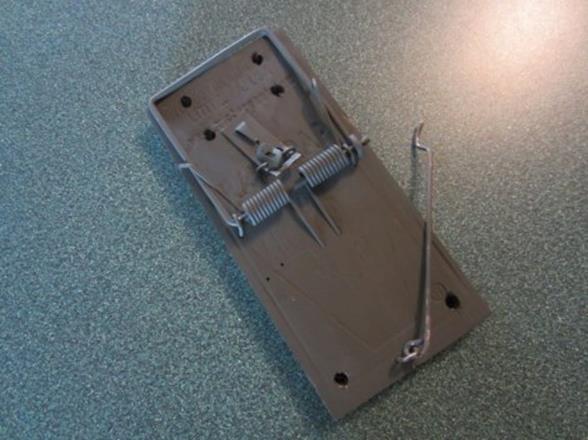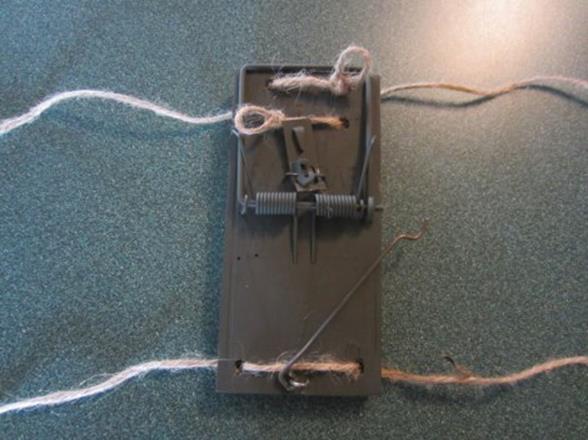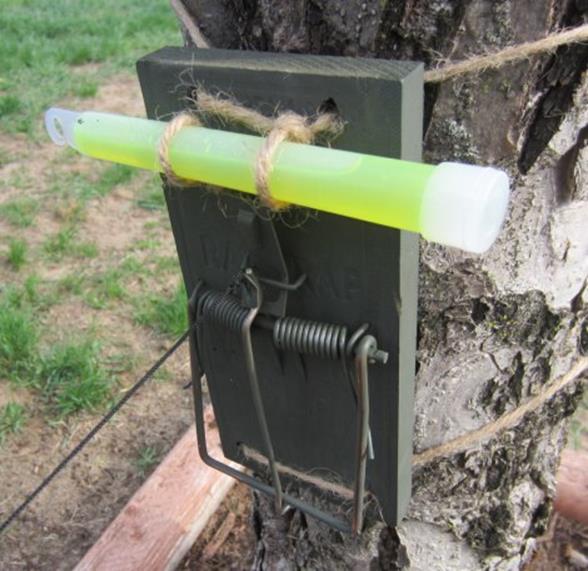The purpose of this device is to warn you when someone crosses your perimeter. The rat trap, when tripped, breaks the glowstick and causes it to illuminate. So, not only will you hear the trap snap shut, you’ll see where your perimeter was breached.
The glow stick perimeter protector relies on line of sight in order to be an effective option for an early warning sign. This nifty little contraption could provide a cost effective solution for providing an added level of security to a safe haven location. These are fairly easy trip wire signaling devices that will alert you to the location an intruder is approaching from.
The glow stick perimeter protector can be strategically placed around the entire encampment giving all those concerned a little extra breathing room as far as security is concerned.
I started by painting the rat trap OD green because, as everyone knows, painting it this color makes it 40% more awesome. Then I drilled 6 holes through the trap. Be sure to use a “rat trap” and not a mousetrap.
Pull your lines through the holes in the trap as shown here. The top and bottom lines will be used to tie the trap to a tree or post. The top and middle lines are used to hold the glowstick in place. I tied butterfly knots in the top and middle lines to secure the glowstick. Having the loops in 2 different lines allows you to place the glowstick in either a vertical or horizontal position. I tested both configurations and they functioned equally well.
The completed trap should look something like this. Tie your “tripwire” to the rat traps trigger and set it about knee high so that little critters don’t set it off. I used the line that came with the glowstick during testing, but there are certainly other ways that you could rig this up.
Do not make the mistake of relying on the glow stick perimeter protector as a stand-alone solution. As I mentioned previously, these devices require line of sight in order to be effective. They do not emit enough light to visibly see who or what is approaching, but they do glow enough to identify a direction of intrusion, allowing you to respond to an affected area and investigate.
Here is a extra commnet on this:
What you could also do .. is mount it a bit higher, and put it on tension with springs, so when it snaps and cracks the glow stick, it will also shake and the liquid would receive more movement.. though dont make it too lax that it spins around and the glow stick ends up between the trap and the tree… tight enough but with springs so it jiggles and shakes the liquid enough to give you a faster igniting glow.
Also using a Hi Intensity Stick as they light faster and Brighter.
Via: survivormedic







 Follow
Follow